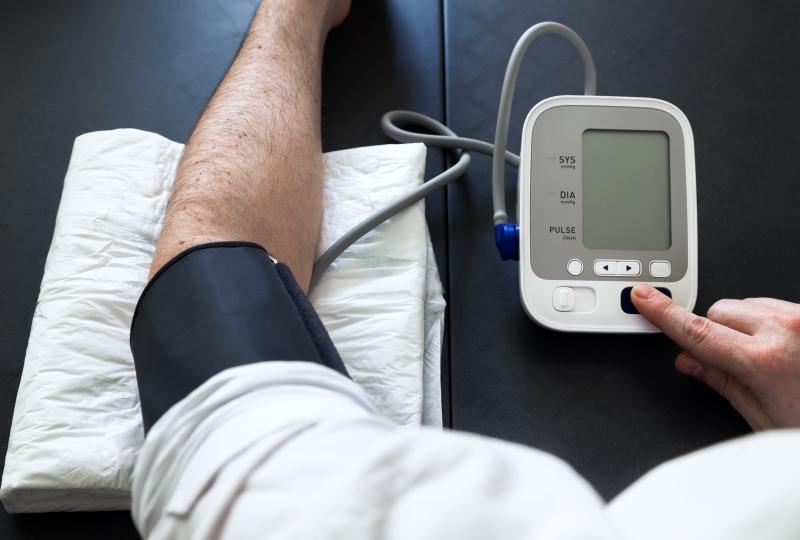Oscillometric BP varies according to ventricular rate in atrial fibrillation patients




 The new AHA guidelines has lowered the blood pressure limit to 130/80mmHg from 140/90mmHg. Does it really matter?
The new AHA guidelines has lowered the blood pressure limit to 130/80mmHg from 140/90mmHg. Does it really matter?Ventricular rate (VR) may affect the accuracy of oscillometric blood pressure (BP) measurement in patients with atrial fibrillation (AF), according to a recent study.
“This prospective study used the intra-aortic BP as a reference standard to evaluate whether the VR levels have an impact on the accuracy of oscillometric BP measurement in AF patients,” researchers said. The present findings “should be taken into the doctor’s consideration when treating AF patients.”
The study included 138 AF patients (mean age, 73.3±7.8 years; 62 percent male) and 112 sinus rhythm patients (SR; mean age, 61.5±9.7 years; 59 percent male), all of whom had undergone coronary angiography. An oscillometric device was used to measure left-arm BP in triplicate, with the average recorded.
In AF patients, oscillometric systolic (S) and diastolic (D) BP measurements were significantly lower than intra-aortic values. No such discrepancy was reported for SR patients. Moreover, while a positive linear relationship existed between intra-aortic and oscillometric BP measurements in both groups, the interaction was stronger in the SR patients. [Hypertension Res 2020;43:518-524]
Focusing on the AF subgroup, the researchers found that in men with VR <80 bpm, oscillometric and intra-aortic BP measurements were statistically comparable. Increasing mean VR widened the discrepancy in SBP and DBP between the two measurement methods.
When VR was <80 bpm, the discrepancy in SBP between the SR and AF arms were –2.1±3.6 and –2.9±4.5 mm Hg, respectively. In this case, the oscillometric device returned the smaller measurement. The corresponding difference values for DBP were also small at –2.1±3.4 and –2.9±3.6 mm Hg, respectively.
This gap increased with VR. At the 80–99-bpm range, SBP and DBP discrepancy for SR patients grew slightly to –2.7±3.3 and –2.3±3.4 mm Hg, respectively. In contrast, the difference values for AF patients jumped sharply to –5.4±6.9 and –4.5±5.0 mm Hg, respectively, both of which were significantly greater than in the SR subgroup (p<0.05).
At the topmost VR category of >120 bpm, the between-measurement differences in SBP and DBP in SR patients were –4.4±2.6 and –4.6±1.0 mm Hg, respectively. The corresponding values continued to be significantly greater in the AF patients (–10.3±6.7 vs –8.4±4.7 mm Hg, respectively; p<0.05). In all cases, BP measured by the oscillometric device was smaller.
“Our study demonstrated for the first time that in AF patients, the accuracy of oscillometric BP measurement is dependent on the VR levels,” the researchers said. “Based on our data, the oscillometric SBP in VR at 110 bpm may be underestimated by approximately a mean of 10 and 8 mm Hg against the intra-aortic SBP and DBP.”
“Although repeated BP measurements are presently suggested for obtaining a relatively reliable BP reading in AF patients, developing a more accurate BP method for AF patients is necessary in the future,” they added.